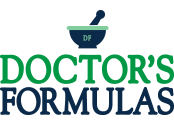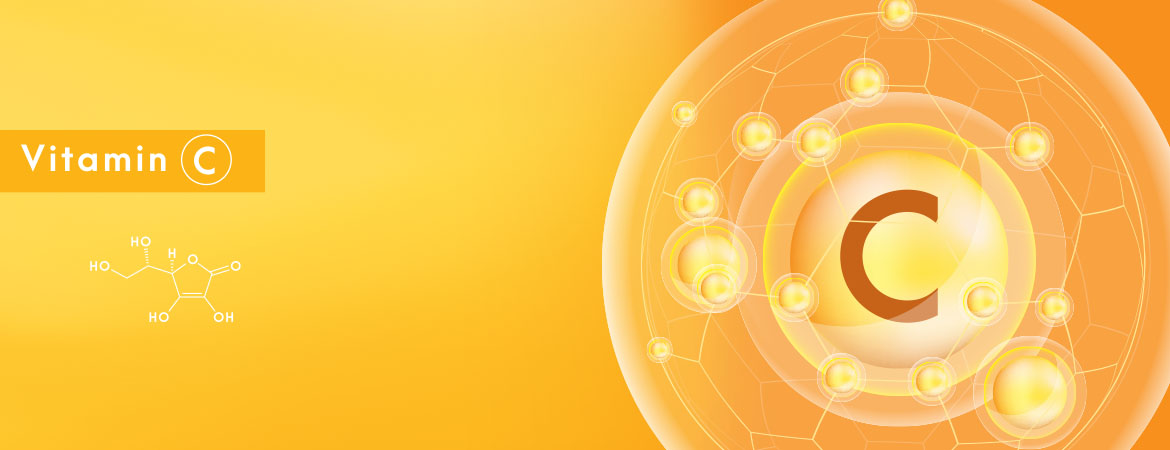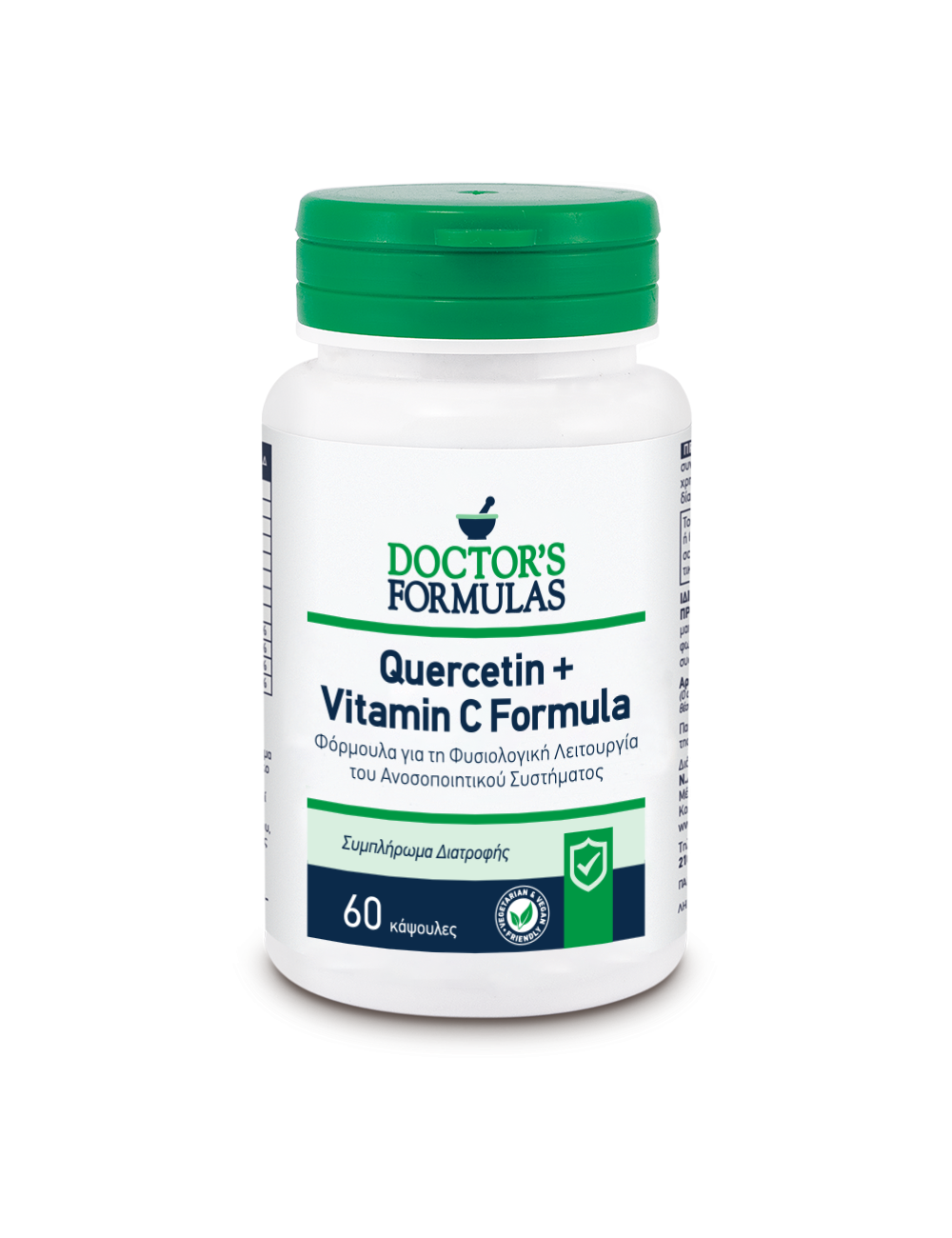Evaluation for Vitamin C 1000mg Fast Action Formula
Vitamin C Fast Action Tablets by Doctor’s Formulas
Food Supplements: Evaluation of Matrix Properties
Vitamin C (ascorbic acid) is a diet-dependent vitamin that promotes antioxidation through free radical scavenging and electron donation, has anti-inflammatory properties, supports the growth of healthy immune cells, and enhances the bioavailability of iron in hemoglobin.
Vitamin C as a food supplement is commercially available in many forms like immediate/extended-release, effervescent, and chewable tablets.
Its absorption from a solid dosage form after oral administration depends on the release of the active ingredient from the product under physiological conditions and the permeability across the gastrointestinal tract.
Generally, immediate-release formulations provide rapid drug absorption and consequently a quick onset of the therapeutic effect. The aim of this study was to examine whether the physicochemical properties of the excipients, present in the solid pharmaceutical formulation understudy, promote a synergistic interaction with the stereoelectronic features of ascorbic acid so that the latter is released into the gastric-like dissolution environment in 30 minutes, thus ensuring fast onset of action.
Uniformity of tablets regarding their weight, thickness, friability, hardness, disintegration, and dissolution was achieved. The careful choice of the appropriate type and quantity of excipients (calcium phosphate, corn starch, silicon dioxide, maltodextrin, and magnesium stearate) in the tablet formulation, along with the application of the suitable compression force, ensures right handling/packaging and safe transportation.
Moreover, the disintegration time as well as the dissolution profile matched the requirements needed for immediate release formulations.
INTRODUCTION
Vitamin C (ascorbic acid) is an essential dietary nutrient required as a co-factor for many enzymes, and humans are among the few mammals that lack the ability to synthesize ascorbic acid from glucose.
Vitamin C is a powerful and effective antioxidant that protects not only against free radicals but also against reactive oxygen species (ROS) produced during normal metabolism. It has the capacity to regenerate Vitamin E and a recent study in smokers, have proved that Vitamin C converts the oxidized form of Vitamin E to its normal oxidation state.
Vitamin C stimulates the production, as well the function of white blood cells, especially neutrophils, lymphocytes and phagocytes and protects the integrity of the cells of the immune system.
According to the recent literature:
“Vitamin C supports epithelial barrier function against pathogens and promotes the oxidant scavenging activity of the skin, thereby potentially protecting against environmental oxidative stress.
Vitamin C accumulates in phagocytic cells, such as neutrophils, and can enhance chemotaxis, phagocytosis, generation of reactive oxygen species, and ultimately microbial killing.
It is also needed for apoptosis and clearance of the spent neutrophils from sites of infection by macrophages, thereby decreasing necrosis/NETosis and potential tissue damage. The role of vitamin C in lymphocytes is less clear, but it has been shown to enhance differentiation and proliferation of B- and T-cells, possibly due to its gene-regulating effects.
Vitamin C deficiency results in impaired immunity and higher susceptibility to infections. In turn, infections significantly impact on Vitamin C levels, due to enhanced inflammation and metabolic requirements”.
Vitamin C is a promising antioxidant candidate that has been examined in burn resuscitation studies and shows efficacy in reducing the fluid requirements in the acute phase after burn injury.
In the event of “invaders,” phagocytes release superoxide radicals, hypochlorous acid, and others. These reactive oxygen species kill the “invaders,” but throughout this process, they also harm themselves.
Due to this antioxidant property, Vitamin C protects white blood cells against autoxidation by enhancing their glutathione levels.
Moreover, it is necessary for the synthesis of collagen, which is an essential structural element of vessels, tendons, ligaments, and bones. It also plays a key role in the synthesis of norepinephrine (important neurotransmitters). It is also necessary for the synthesis of carnitine (transport of fats into the mitochondria).
Recent researches have shown that it is also involved in the metabolism of cholesterol to bile acid sequestrants that influence the levels of cholesterol in the blood and are responsible for the occurrence of gallstones.
Vitamin C also increases food iron bioavailability enhancing intestinal absorption of inorganic iron.
Camu-camu, a well-researched and innovative natural product, has the potential to contribute, possibly substantially, to aging-related diseases. Various antimicrobial constituents of camu-camu fruit were isolated and from obtained results, it is suggested that the peel and seeds of camu-camu fruit could be utilized as nutraceuticals.
Most common oral drug products, such as tablets and capsules, are formulated to disintegrate rapidly and release their medicaments immediately after oral administration in the gastrointestinal tract.
Such immediate release products result in relatively rapid drug absorption and consequently in a quick onset of their therapeutic effect. The proper choice of excipients used is of critical importance to the development of immediate release formulations.
The aim of this study is to examine whether the physicochemical properties of the excipients, present in the solid pharmaceutical formulation under study, promote a synergistic interaction with the stereo electronic features of ascorbic acid, so that the latter is released into the gastric like dissolution environment in 30 minutes, thus ensuring fast onset of action.
The formulation contains piperine, which increases the rate of absorption of Vitamin C. It also contains the best and most absorbable forms of Vitamin C from camu-camu and acerola.
Our aim was to obtain release of vitamin C before the 30 minute and for this reason, we tried different sources of vitamins C in order to obtain the final formulation. As we declared above, the best one was from camu camu.
RESULTS AND DISCUSSION
4.1. Weight Variation of Vitamin C Tablets
According to the USP standards for tablets, the requirements for uniformity of mass are met if the weight of not more than two out of 20 tablets differs from the average weight by more 7.5% and no tablet differs in weight by more than double that percentage [9].
The tablets were within the limits with an average weight of 1.378±0.004 (±SD) g and 6×10−5 % RSD. The maximum percentage difference from the mean for any tablet did not exceed 0.66%.
4.2. Thickness
The average value for thickness was calculated at 7.22 mm (±0.00).
4.3. Friability
The results from the friability testing showed that the friability of the Vitamin C tablets was 0.36%, a value within the acceptable limits according to the USP. This indicates adequate tablet strength.
4.4. Hardness
The average value was calculated at 13.18 kp (±1.73), indicating adequate tablet strength.
4.5. Disintegration
The average time noted for the complete disintegration of Vitamin C tablets was less than 15 min. The results meet the requirements of the USP, which specify that uncoated tablets should disintegrate within 30 min.
4.6. In Vitro Drug Release
The dissolution test results obtained for the Vitamin C tablets are depicted in Figure 2. Following an immediate release profile, the tablets were completely dissolved after 30 min and the average release percentage from the tablets was 99.06%. According to the USP dissolution requirements, for an immediate-release formulation, the amount of drug released should not be less than 80% of the labeled amount at 30 min.
CONCLUSIONS
Vitamin C fast action tablets by Doctor’s Formulas’ Food Supplements were evaluated regarding their tablets’ properties.
Uniformity of dosage forms (weight and thickness) was achieved and the disintegration time as well as the dissolution profile matched the requirements for immediate release formulations.
The tablets’ strength (friability and hardness), as a consequence of the choice of the appropriate type/quantity of excipients (calcium phosphate, corn starch, silicon dioxide, maltodextrin and magnesium stearate) in the tablet formulation, along with the application of the suitable compression force, ensures right handling/packaging and safe transportation.
References and Notes
-
Jacob, R.A. and Sotoudeh, G., 2002. Vitamin C and status in chronic disease. Nutr. Clin Care., 5(2), pp.66–74.
-
Carr, A.C. and Maggini S., 2017. Vitamin C and immune function. Nutrients, 9, p.11.
-
Padavatty, S.J. and Levine, M., 2016. Vitamin C: The known and the unknown and Goldilocks. Oral Dis., 22(6), pp.463–493.
-
Rizzo, J.A., Rowan, M.P., Driscoll, I.R., Chung, K.K. and Friedman, B.C., 2016. Vitamin C in burn resuscitation. Crit. Care Clin., 32(4), pp.539–546.
-
Langley, P.C., Pergolizz Jr., J.V., Taylor Jr., R. and Ridgway, C., 2015. Antioxidant and associated capacities of Camu camu (Myrciaria dubia): A systematic review. J. Altern. Complement Med., 21(1), pp.8–14.
-
Kaneshima, T., Myoda, T., Toeda, K., Fujimori, T. and Nishizawa, M., 2017. Antimicrobial constituents of peel and seeds of camu-camu (Myrciaria dubia). Biosci. Biotechnol Biochem., 81(8), pp.1461–1465.
-
Shargel, L., Wu-Pong, S. and Yu, A.B.C., 2012. Modified-Release Drug Products in Applied Biopharmaceutics & Pharmacokinetics. 6e, McGraw-Hill Education, Chap. 17, ISBN 978–0-07–160393-5.
-
Ansari, M., Kazemipour, M. and Talebnia, J., 2004. The development and validation of a dissolution method for clomipramine solid dosage forms. Dissolution Technologies, 11(3), pp.16–24.
-
USP 36-NF 31, 2013. United States Pharmacopoeial Convention: Rockville, MD, USA
Study


